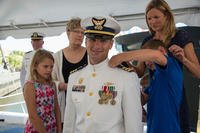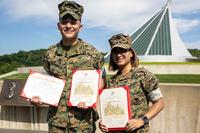Enlisted Marines make up the backbone of the Marine Corps, performing the essential, hands-on work that keeps the force mission-ready. They receive intensive training for a wide range of roles, including infantry, aviation support, intelligence, communications, logistics and administration.
As a Marine moves up the ladder, their responsibility and contribution to the mission increases. This also means that those who have earned a higher rank have a special responsibility to look out for the welfare of their subordinates. As they rise through the ranks, enlisted Marines become noncommissioned officers (NCOs) and eventually staff NCOs, taking on greater responsibilities in leadership, mentorship and daily operations.
Commissioned officers are the Marine Corps' strategic leaders and decision-makers. They command units, plan missions and manage personnel and resources. Officers typically enter through Officer Candidates School (OCS), the Naval Reserve Officers' Training Corps (NROTC), or the U.S. Naval Academy in Annapolis, Maryland. Their leadership begins at the platoon or company level and can rise to general officer ranks, overseeing large-scale operations and shaping the future of the Corps.
Jump to:
- Marine Corps Enlisted Ranks
- Marine Corps Warrant Officer Ranks
- Marine Corps Commissioned Officer Ranks
Marine Corps Enlisted Ranks
Enlisted Marine Corps ranks fall into three main categories: junior enlisted (E-1 through E-3), noncommissioned officers (NCOs, E-4 and E-5) and staff noncommissioned officers (SNCOs, E-6 through E-9).
Junior enlisted Marines are as vital to the Marine Corps mission as any other ranks, but their focus is on learning new technical skills and developing followership and leadership abilities. Being a good Marine means following orders and looking out for their peers. This is the time for junior enlisted Marines to become productive members of the Corps.
Moving up the Marine Corps ranks: Company commanders have the authority to promote active-duty enlisted privates (E-1) to the rank of PFC (E-2) once they have completed six months of service. This promotion is virtually automatic for those who meet the basic promotion criteria.
Marine Corps Ranks: Junior Enlisted (E-1 through E-3)
Private (E-1)
Upon graduating from basic training, Marines earn the rank of private (E-1). Most enlisted Marines hold this rank for six months before they are promoted to private first class. The private's responsibilities are to follow orders and learn how to be contributing members of the Marine Corps. Simply put, they are to do what they are told, when they are told and how they are told.
Moving up the Marine Corps ranks: Company commanders have the authority to promote active-duty enlisted privates (E-1) to the rank of PFC (E-2) once they have completed six months of service. This promotion is virtually automatic for those who meet the basic promotion criteria.
Private First Class (PFC) (E-2)
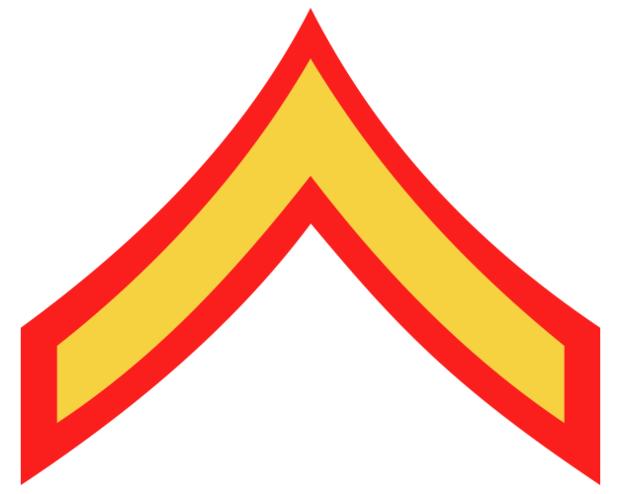
Private first class is the second enlisted rank in the Marine Corps. The rank of PFC was established in 1917 to mirror a similar rank added to the Army structure.
Private first class is the first promotion toward becoming an integral part of the Marine Corps. PFCs are the backbone of the Marines. The PFC's job is to apply their new technical skills while continuing to learn and develop new skills.
Moving up the Marine Corps ranks: Like the promotion to process to PFC, Marine Corps company commanders have the authority to promote active-duty enlisted Marines to the rank of lance corporal (E-3) when they have completed nine months' time in service (TIS) and eight months' time in grade (TIG). Like achieving PFC, this promotion is virtually automatic for those who meet the basic promotion criteria.
Lance Corporal (LCpl) (E-3)
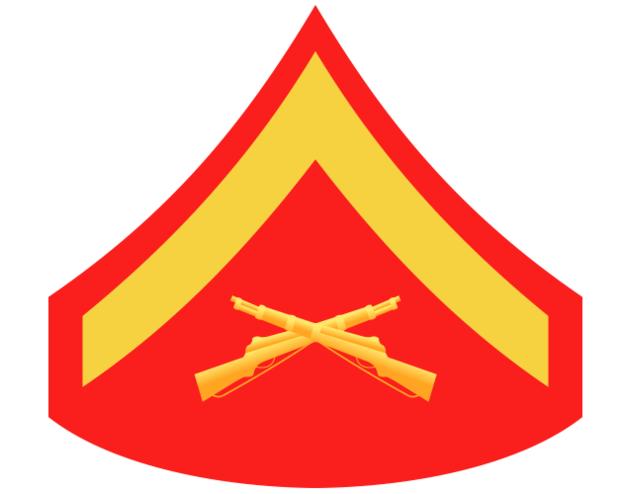
Lance corporal is the third enlisted rank (E-3) in the Marine Corps. The rank of lance corporal was established permanently in 1958, but the term dates to the early 1800s.
The rank of lance corporal (LCpl) was first used by the Marines in the Indian Wars of the 1830s. Lance corporal is the next step in becoming an integral part of the Marine Corps. Lance corporals are expected to continue to apply their technical training in addition to learning and developing leadership skills.
Moving up the Marine Corps ranks: Unlike the ranks of PFC and LCpl, to be worthy of the title "noncommissioned officer," you must demonstrate that you are capable of handling the demands of the next higher grade by meeting basic eligibility requirements and competing in a Marine Corps-wide Composite Score competition, which is intended to promote the best qualified candidates.
Marine Corps Ranks: Noncommissioned Officer (NCO) (E-4 and E-5)
Marine Corps noncommissioned officers (NCOs), including corporals and sergeants, play a vital leadership role rooted in tradition, responsibility and example. They are accountable for the well-being, discipline and performance of their Marines both in and out of combat. The NCO Creed emphasizes leading by example, mentoring others and upholding high standards.
"Marine NCOs have faced a number of physical and mental challenges and are considered experienced Marines," according to the Marine Corps. "Beginning at the rank of Sergeant, Marine NCOs can seek the opportunity to serve as Drill Instructors in charge of a recruit training platoon."
Typical NCO duties include training Marines in their specialties, enforcing discipline and appearance standards, managing daily operations, maintaining equipment and facilities, and serving as a critical link between enlisted personnel and leadership. Their conduct directly reflects on the unit and the Corps as a whole.
Corporal (Cpl) (E-4)
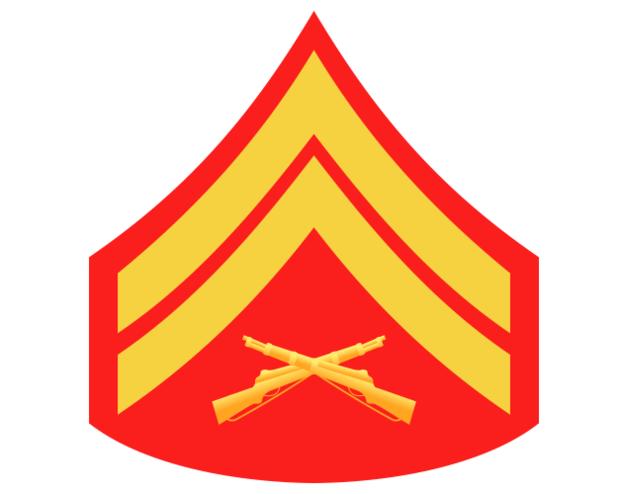
Corporal (E-4) is the most junior of the noncommissioned officer (NCO) ranks. However, that does not lessen the authority or responsibility the rank carries. Corporals are required to exercise an ever-increasing degree of maturity, leadership and professionalism. To a large extent, accomplishment of the ultimate mission -- success in battle -- depends on the corporal's development as a small unit leader and their professional abilities.
Moving up the Marine Corps ranks: Corporals demonstrate they are worthy of being NCOs. To move up to sergeant, they must prove they can meet the increased demands of the next higher grade by achieving basic eligibility requirements and competing in the Composite Score competition.
Sergeant (Sgt) (E-5)
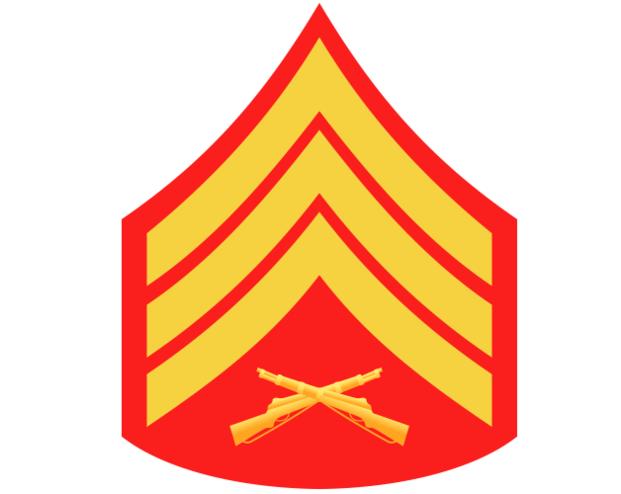
The Marine Corps rank of sergeant (E-5) closely parallels that of the corporal in duties and responsibilities. In fact, the basic duties and responsibilities of all the NCO ranks never change. The major difference between the sergeant and the corporal is that the sergeant is in daily contact with larger numbers of Marines and generally has more equipment and other property to maintain.
Sergeants are required to exercise an ever-increasing degree of maturity, leadership and professionalism. To a large extent, accomplishment of the ultimate mission -- success in battle -- depends on the sergeants' leadership and professional abilities.
Moving up the Marine Corps ranks: The promotion process tightens up as Marines move up the enlisted ranks. Unlike the corporal and sergeant promotion process, the staff NCO (E6-E9) promotion process includes a centralized selection board. The board thoroughly reviews each applicant's record to ensure only the best and brightest move up to staff NCO.
"No Marine should be promoted to Cpl or Sgt who has not positively demonstrated the potential, motivation (and) maturity to satisfactorily discharge the duties of a small unit leader," according to the Marine Corps' Enlisted Promotion System handbook. "Therefore, a commander's recommendation concerning a Marine's promotion to Cpl or Sgt is more critical; it must be a thoughtful, deliberate decision."
Marine Corps Ranks: Staff Noncommissioned Officer (SNCO) (E-6 through E-9)
Staff NCOs include staff sergeant (E-6), gunnery sergeant (E-7), master sergeant/first sergeant (E-8) and master gunnery sergeant/sergeant major (E-9).
Staff Sergeant (SSgt) (E-6)
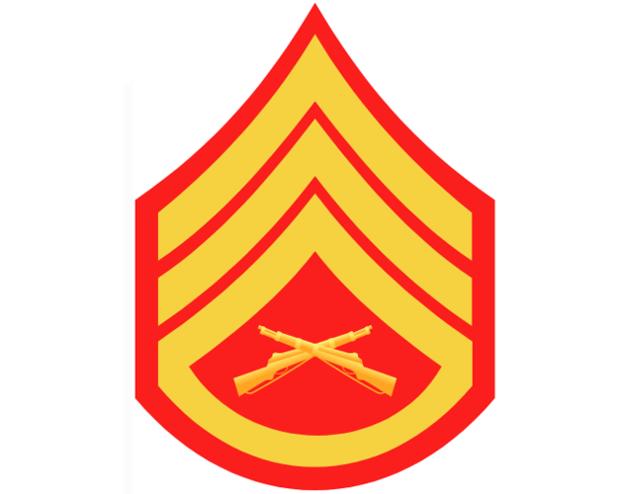
The rank of staff sergeant (SSgt) is the entry point to the staff NCO ranks. There are significant differences as you step up from the NCO to the staff NCO levels.
A staff sergeant typically has one or more sergeants under their direct leadership. Staff sergeants are responsible for the continued successful development of their sergeants, as well as all Marines in their section, squad or team.
The complexities of the staff sergeant job increase as their responsibilities broaden. Staff sergeants' professional competence is measured by how well they develop and maintain their subordinate Marines' potential.
Gunnery Sergeant (GySgt) (E-7)
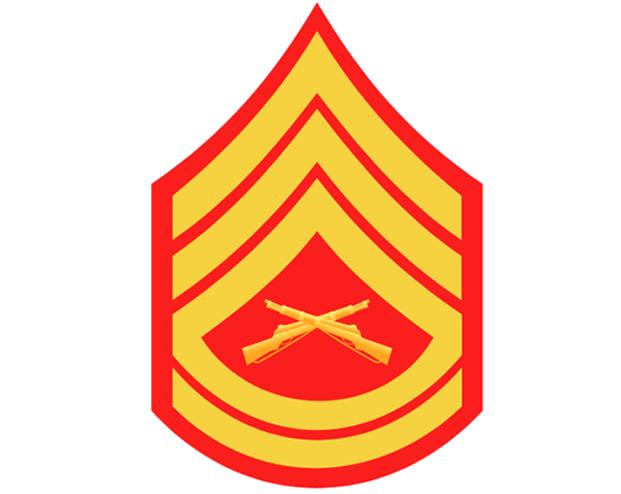
Gunnery sergeants are the backbone of the Marine Corps' staff NCO ranks, known for their leadership, experience and sound decision-making. They set the standard for professionalism and ensure that subordinate NCOs and SNCOs are trained, motivated and accountable. Their responsibilities include enforcing discipline, maintaining equipment and facilities, overseeing daily operations, mentoring Marines and implementing the policies of senior officers.
Moving up the Marine Corps ranks: Eligible Gunnies must indicate on their "fitness reports" whether they wish to be considered for promotion to master sergeant or first sergeant.
First Sergeant (1stSgt) and Master Sergeant (MSgt) (E-8)

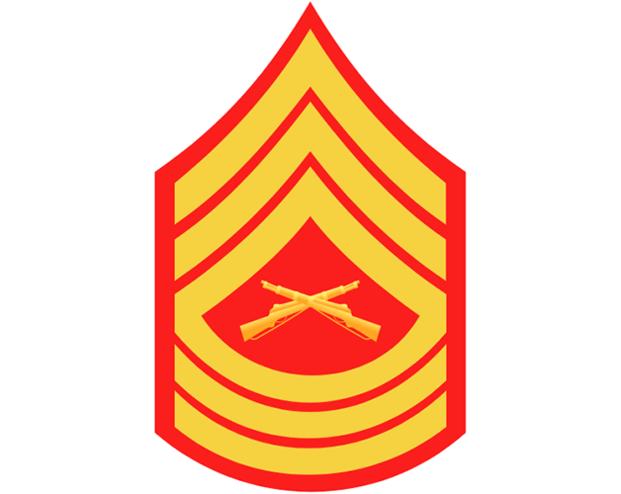
Although they share the same paygrade (E-8), they have different roles and responsibilities. The first sergeant has a command advisory responsibility while the master sergeant -- nicknamed a "top" -- has more technical responsibilities.
The first sergeant is the principal enlisted adviser to the unit commander. Their primary requisite is outstanding leadership, combined with an exceptionally high degree of professional competence and the ability to act independently as the principal enlisted assistant to the commander in all administrative, technical and tactical requirements of the organization.
The master sergeant is the technical expert in their field. Their primary prerequisite is an outstanding proficiency in the assigned military operational specialty (MOS), combined with an exceptionally high degree of leadership and supervisory ability and the ability to act independently as an enlisted assistant to the commander in all administrative, technical and tactical requirements of their occupational specialty.
Moving up the Marine Corps ranks: A first sergeant is eligible to be promoted to a sergeant major, while a master sergeant would be on the promotional track for master gunnery sergeant. Both of these promotions would typically be eligible after three years TIG and 10 years TIS.
Master Gunnery Sergeant (MGySgt) and Sergeant Major (SgtMaj) (E-9)
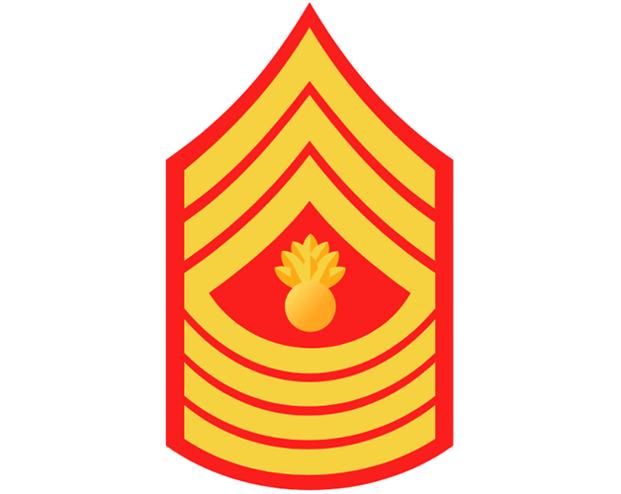

Like the ranks of master sergeant (MSgt) and first sergeant (1stSgt), master gunnery sergeants (MGySgt) and sergeant majors (SgtMaj) are paid the same but they have significantly different roles.
The U.S. Marine Corps first used the title sergeant major in 1801. It was originally a rank held by only one person, like the current sergeant major of the Marine Corps. By the late 1800s, there were five sergeants major. The rank was eliminated in 1946 and brought back in 1954.
The sergeant major is the principal enlisted adviser to Marine commanders. Like the first sergeant, their main job is outstanding leadership, combined with an exceptionally high degree of professional competence and the ability to act independently as the principal enlisted assistant to the commander in all administrative, technical and tactical requirements of the organization.
The rank of master gunnery sergeant ("master gun") has been in use off and on since the Spanish-American War era. Like many other Marine Corps ranks, master gunnery sergeant was established permanently in the late 1950s. They are the technical experts in their MOS.
Sergeant Major of the Marine Corps (SMMC) (E-9)
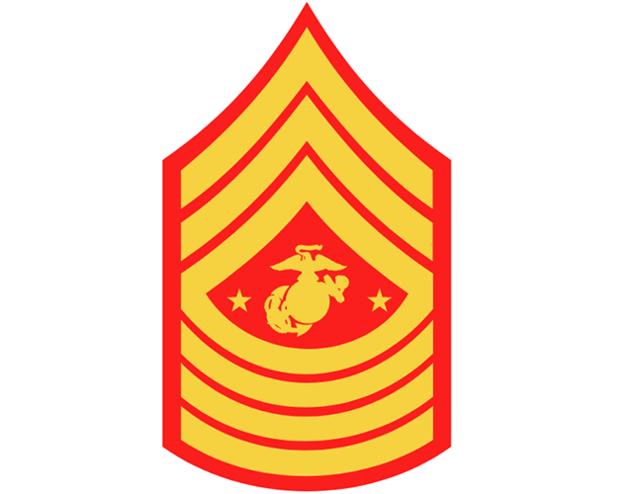
The post of sergeant major of the Marine Corps was established in 1957 as the senior enlisted adviser to the commandant of the Marine Corps. Originally created as the sergeant major in the late 1800s, today's rank of sergeant major of the Marine Corps holds a significant position of authority and respect. They act as the commandant's eyes and ears when it comes to enlisted affairs and other leadership matters.
The sergeant major of the Marine Corps is selected by the commandant of the Marine Corps and normally serves a four-year term with them.
Marine Corps Warrant Officer Ranks
Warrant officers in the U.S. Marine Corps are highly trained specialists who provide a critical link between enlisted Marines and commissioned officers. They are technical experts and leaders in fields such as aviation maintenance, cybersecurity, engineering, intelligence and logistics. Warrant officers bring deep subject matter expertise and years of experience to their roles, helping the Marine Corps function with precision and efficiency.
Most warrant officers are selected from the enlisted ranks for their exceptional skill, leadership and performance. Aviation candidates may also enter through the Marine Corps Enlisted Commissioning Program (MECEP) or the Enlisted-to-Warrant Officer (EWO) route, with some aviation warrant officers recruited through programs similar to the Army's Warrant Officer Flight Training pipeline.
Warrant Officer (W1)
Warrant officers (WOs) are appointed by the secretary of the Navy and serve as entry-level technical leaders. They are learning to manage systems and Marines in their field, often serving at the unit level and supporting the operational needs of their specialty.
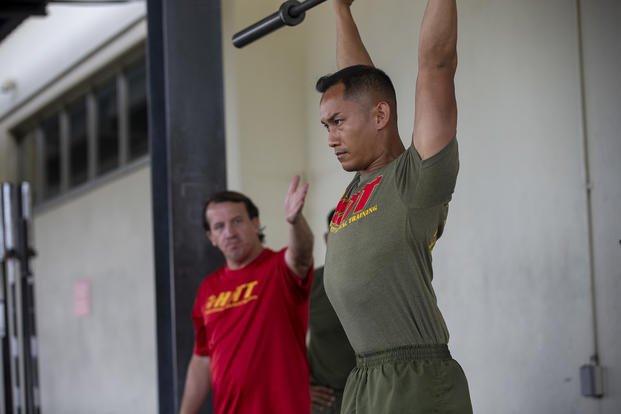
Chief Warrant Officer 2 (CWO2)
CWO2s are fully commissioned officers who have demonstrated professional maturity and technical depth. They serve as key advisers to commanders and play leadership roles in training, planning and mission execution.
Chief Warrant Officer 3 (CWO3)
CWO3s operate at the battalion level or higher and are considered advanced experts in their field. They often coordinate large-scale technical operations, provide mentorship to junior warrant officers and help shape unit-level strategies.
Chief Warrant Officer 4 (CWO4)
At this level, warrant officers influence policy, doctrine and training at the regimental and group levels. They are seasoned leaders with broad authority in their occupational specialty and contribute significantly to force readiness and innovation.
Chief Warrant Officer 5 (CWO5)
CWO5s are the most senior technical officers in the Marine Corps. They serve as principal advisers to top leadership and often represent their field in strategic planning and decision-making at the service-wide level. Promotion to CWO5 is extremely selective and reflects a career of distinguished service.
Warrant officer career progression: Aspiring warrant officers must attend the Warrant Officer Basic Course (WOBC) at The Basic School (TBS) in Quantico, Virginia. Throughout their careers, warrant officers undergo continued professional military education and must demonstrate leadership, technical excellence and adaptability. Promotion boards consider performance evaluations, time in grade, leadership impact and ongoing contributions to the Marine Corps mission when determining advancement.
Marine Corps Commissioned Officer Ranks
Marine Corps ranks for officers are split into three tiers: junior officers, field grade officers and general, or flag, officers.
Commissioned officers may be prior enlisted, but they do not sign an enlistment contract once commissioned. They serve indefinitely at the pleasure of the president of the United States. They hold a commission charging them with the duties and responsibilities of their specific rank. Marine officer ranks consist of commissioned officers and general officers. Promotion of officers is confirmed by the Senate.
Marine Corps Ranks: Officers
Second Lieutenant (2LT) (O-1)

Second lieutenant is the first rank a commissioned officer makes when joining the U.S. Marine Corps. Due to their inexperience, they often are guided by senior officers or warrant officers. Nicknames for second lieutenant include "nugget" and "butterbar," because their insignia is a single gold bar.
First Lieutenant (1LT) (O-2)

The rank of first lieutenant is attained usually automatically after a Marine has served for two years as a second lieutenant. Promotion to first lieutenant generally leads to bigger paychecks, more responsibility and future chances for promotion.
Captain (CPT) (O-3)

Captains in the Marine Corps -- often called skippers -- are responsible for individual companies and act as company commander for 62-190 Marines. Captains generally are promoted from lieutenants. They are in charge of the tactical and everyday operations of their company and often are assisted by junior commissioned and noncommissioned officers.
Marine Corps Officer Ranks: Field Grade Officers (O-4 to O-6)
Major (Maj) (O-4)
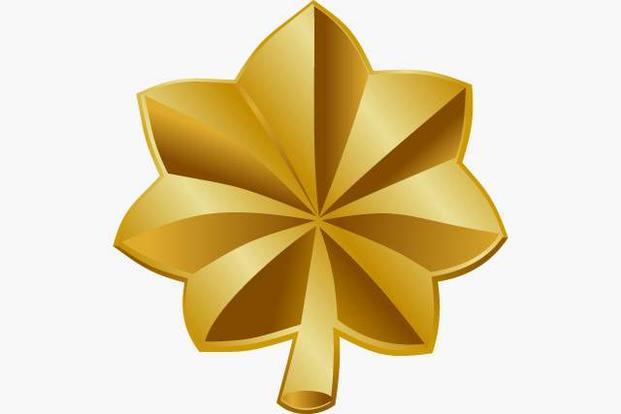
Majors in the U.S. Marine Corps typically are recruited from the rank of captain. They are considered to be a field grade.
Lieutenant Colonel (LtCol) (O-5)
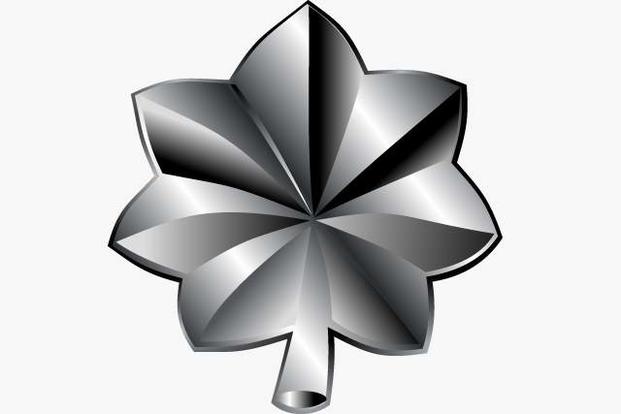
Lieutenant colonels are the second field officer grade in the U.S. Marine Corps. They command from 300-1,000 Marines at a given time and are assisted by one major, junior commissioned officers and one command sergeant major as an enlisted adviser. It typically takes 16-22 years to reach the rank of lieutenant colonel.
Colonel (Col) (O-6)
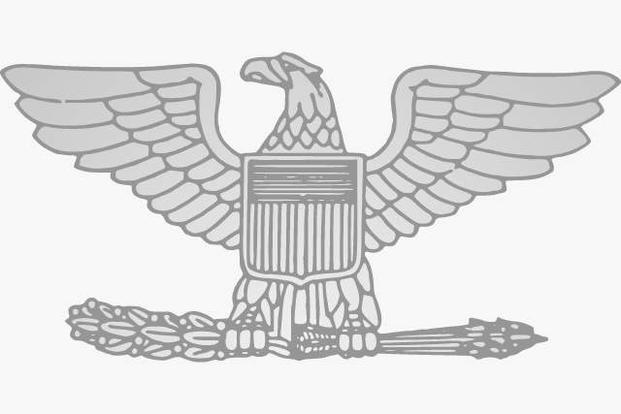
Colonels in the Marine Corps typically go to the Army War College in Pennsylvania or the Marine Corps War College in Virginia. It typically takes 21-23 years to reach this rank, and it is considered to be the final step before reaching the general officer ranks.
Marine Corps Officer Ranks: General Officers (O-7 and Above)
Brigadier General (BGen) (O-7)

The lowest of the general officer ranks, brigadier generals in the Marine Corps are one-star general officers. They preside over 10,000 to 15,000 Marines and are in charge of tactical planning and coordination of operations. Brigadier generals must retire five years after achieving the rank or once 30 years of cumulative service has been reached, whichever comes first. The only exception to this rule is to receive a promotion.
Major General (MajGen) (O-8)

A two-star general, major generals are promoted via a strict process of multiple nominations and reviews. Major generals must retire after five years in the rank or after 35 years of service unless they are promoted.
Lieutenant General (LtGen) (O-9)

Considered a temporary rank, lieutenant generals retire once their active tour of duty or service comes to an end. They must retire after 38 years in the service or a month after turning 64. Lieutenant generals can extend their status only through an act of Congress.
General (Gen) (O-10)

Generals in the Marine Corps are the highest-ranking officers in the branch. The Marine Corps can have a maximum of 60 general officers, and only three may be four-star generals. Generals are nominated by the president and are confirmed by the Senate. They must retire after 40 years of service or after they turn 64.
Marine Corps Rank and Insignia
Enlisted Marine Corps Ranks
- E-1: Private (Pvt) -- No insignia; entry-level Marine
- E-2: Private First Class (PFC) -- Wears one chevron; begins formal training and unit integration
- E-3: Lance Corporal (LCpl) -- One chevron with crossed rifles; builds tactical skills, prepares for leadership
- E-4: Corporal (Cpl) -- Two chevrons with crossed rifles; first NCO rank, leads fire teams or small units
- E-5: Sergeant (Sgt) -- Three chevrons with crossed rifles; leads squads and trains junior Marines
- E-6: Staff Sergeant (SSgt) -- Three chevrons over one rocker with crossed rifles; oversees platoon-level leadership and logistics
- E-7: Gunnery Sergeant (GySgt) -- Three chevrons over two rockers with crossed rifles; senior platoon-level leader, tactical expert
- E-8: Master Sergeant (MSgt) -- Three chevrons over three rockers with crossed rifles; technical specialist in occupational field
- E-8: First Sergeant (1stSgt) -- Same insignia but with a diamond; company-level senior enlisted leader focused on morale and discipline
- Note: E-8 includes two distinct career tracks -- technical (MSgt) and leadership (1stSgt)
- E-9: Master Gunnery Sergeant (MGySgt) -- Three chevrons over four rockers with a bursting bomb; highest technical expert
- E-9: Sergeant Major (SgtMaj) -- Same insignia with a star; senior enlisted leader at battalion and higher levels
- E-9S: Sergeant Major of the Marine Corps (SMMC) -- Unique insignia with the Eagle, Globe and Anchor flanked by stars; senior-most enlisted Marine, adviser to the Commandant
Warrant Officer Ranks (W-1 to W-5)
- W-1: Warrant Officer (WO) -- Appointed specialist in technical fields
- W-2: Chief Warrant Officer 2 (CWO2) -- Commissioned officer, provides advanced technical leadership
- W-3: Chief Warrant Officer 3 (CWO3) -- Mid-level technical expert and mentor
- W-4: Chief Warrant Officer 4 (CWO4) -- Senior technical officer and policy adviser
- W-5: Chief Warrant Officer 5 (CWO5) -- Master technical authority, strategic-level adviser

Commissioned Officer Ranks
- O-1: Second Lieutenant (2ndLt) -- Leads platoons, entry-level officer
- O-2: First Lieutenant (1stLt) -- Platoon or executive officer; more experience
- O-3: Captain (Capt) -- Company commander; leads 100-200 Marines
- O-4: Major (Maj) -- Battalion staff officer; plans and operations
- O-5: Lieutenant Colonel (LtCol) -- Commands battalions or serves in high-level staff
- O-6: Colonel (Col) -- Commands regiments or serves in senior staff positions
- O-7: Brigadier General (BGen) -- Commands brigades or serves as deputy division commander
- O-8: Major General (MajGen) -- Commands divisions
- O-9: Lieutenant General (LtGen) -- Commands Marine Expeditionary Forces or serves in top-level roles
- O-10: General (Gen) -- Commandant of the Marine Corps or other top joint roles
How Promotions Work in the Marines
Enlisted Promotions
Marines generally advance through early enlisted ranks on a time-in-service and time-in-grade basis, assuming good conduct and satisfactory performance. A private (E-1) is typically promoted to private first class (E-2) after six months, then to lance corporal (E-3) at around nine to 12 months.
Promotion to corporal (E-4), the first NCO rank, usually occurs around the two- to three-year mark and is based on a combination of time in service, proficiency and conduct marks, cutting scores and the needs of the Marine's military occupational specialty (MOS). Advancement to sergeant (E-5) and staff sergeant (E-6) becomes increasingly competitive and is governed by promotion boards, quotas and individual performance.
Senior NCO promotions -- gunnery sergeant (E-7), master sergeant or first sergeant (E-8), and master gunnery sergeant or sergeant major (E-9) -- require exemplary service and leadership. These ranks are typically attained between eight and 20 years of service, depending on performance, MOS-specific requirements and selection board decisions.
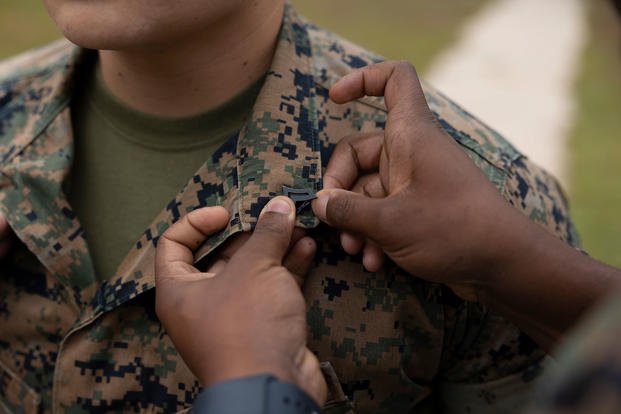
Officer Promotions
Marine Corps officers generally move from second lieutenant (O-1) to first lieutenant (O-2) in about 24 months, and then to captain (O-3) after another two years. Promotions beyond that -- to major (O-4), lieutenant colonel (O-5) and colonel (O-6) -- are competitive and based on the officer's performance, leadership history, professional military education and the needs of the Corps.
"Selection boards are guided by the principle of advancing those officers deemed best qualified to meet the future leadership requirements of the Marine Corps," according to the U.S. Marine Corps Promotion Manual.
There are also meritorious promotions in the Marine Corps. These "are intended to promote Marines whose performance is superior to that of their peers, or to promote Marines for specific actions/superior achievement," according to the Marine Corps' Enlisted Promotion System handbook.
Interested in Joining the Military?
We can put you in touch with recruiters from the different military branches. Learn about the benefits of serving your country, paying for school, military career paths, and more: sign up now and hear from a recruiter near you.







